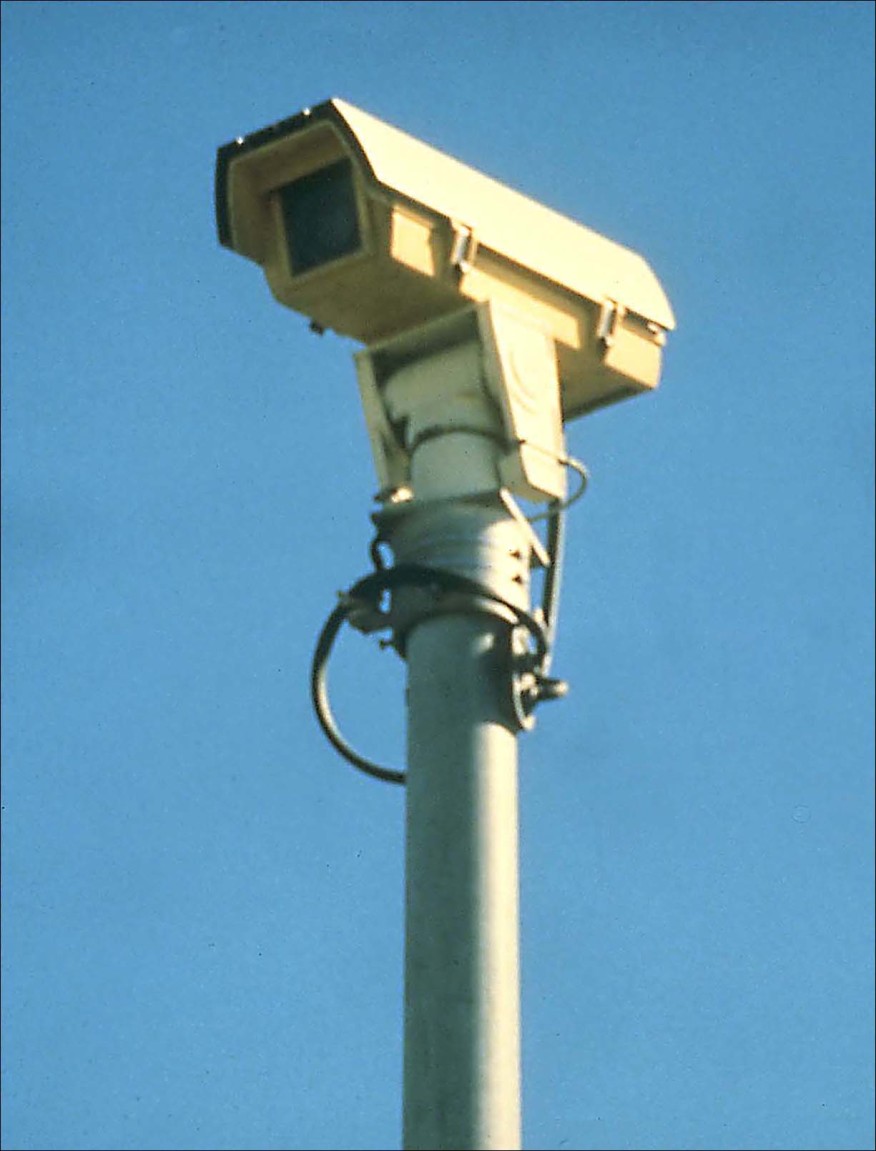
Road Network Operations
& Intelligent Transport Systems
A guide for practitioners!

Road Network Operations
& Intelligent Transport Systems
A guide for practitioners!
CCTV cameras play an important part in road network management. They are installed at sensitive locations on the network to support traffic management, where congestion and traffic queues are frequent and at other locations where there is an increased risk of accidents and traffic incidents. When used for traffic surveillance they can either have a fixed field of view – for example, when used to monitor traffic and provide alerts – or be equipped with a pan, tilt and zoom (PTZ) capability to allow operators to have a wider field of view.
Fixed field of view cameras are generally used for monitoring motorway sections where hard shoulder running is permitted.
Pan, Tilt Zoom (PTZ) cameras are commonly used for:
Either fixed or PTZ cameras can be used:
Control room operators depend on the CCTV camera images – displayed either on their work-stations or large-scale on a “video wall”. CCTV camera images are an important means of traffic surveillance that complements other traffic control measures. Operators rely on images from CCTV cameras to detect and monitor traffic incidents and assess the number of running lanes affected. From this it may be possible to estimate the likely duration of a traffic incident based on previous experience and traffic modelling techniques. Video image processing is used to alert control room operators to stationary vehicles and other unusual events. Operators often wish to see a sequence of images from successive CCTV cameras, in the form of a “video tour” (See Traffic Control).

Video image processing (VIP) identifies vehicles and their associated traffic flow parameters by analysing imagery supplied from CCTV cameras which normally have a fixed field of view. The addition of VIP significantly improves the usefulness of CCTV, particularly where there are a large number of cameras installed, which an operator cannot view at the same time. VIP also provides the means for alerting operators to a traffic incident.
Analogue CCTV images are digitised and then passed through a series of algorithms that identify changes in the image background. In modern digital cameras the video image is already in a digital form – ready for processing. A VIP system consists of a video camera (a digitiser in the case of analogue cameras) and a microprocessor for processing the digital-image – and software to interpret the image content and extract detection information from it.
With digital processing CCTV provides an above-ground alternative to inductive loops or other means of vehicle detection. One big advantage of VIP systems is their ability to provide detection over a number of lanes and in multiple zones within the lane – providing wide area detection. The user can easily modify the detection zones, within seconds, through the graphical interface – without the need to close traffic lanes and dig-up the pavement. Poor lighting, shadows, and bad weather can negatively affect the performance of VIP systems. Evaluation studies in Oakland County, Michigan indicate that modern VIP systems yield excellent performance with a detection accuracy of over 96% under all weather conditions.
VIP systems can be combined with CCTV systems to provide an excellent detection tool, particularly for incident detection and verification purposes. When an incident occurs, the user can switch from the VIP mode to the standard CCTV mode, and then verify the occurrence of the incident via pan/tilt/zoom controls.